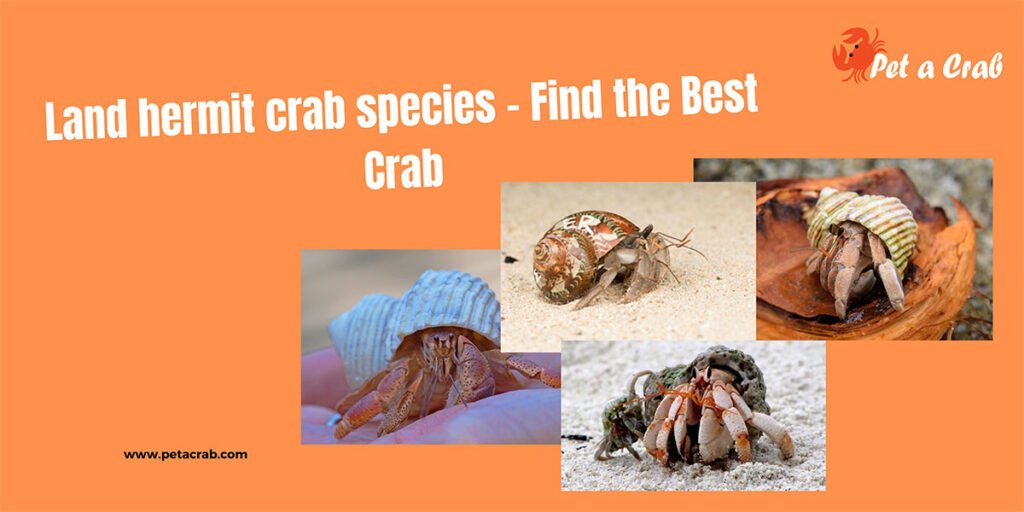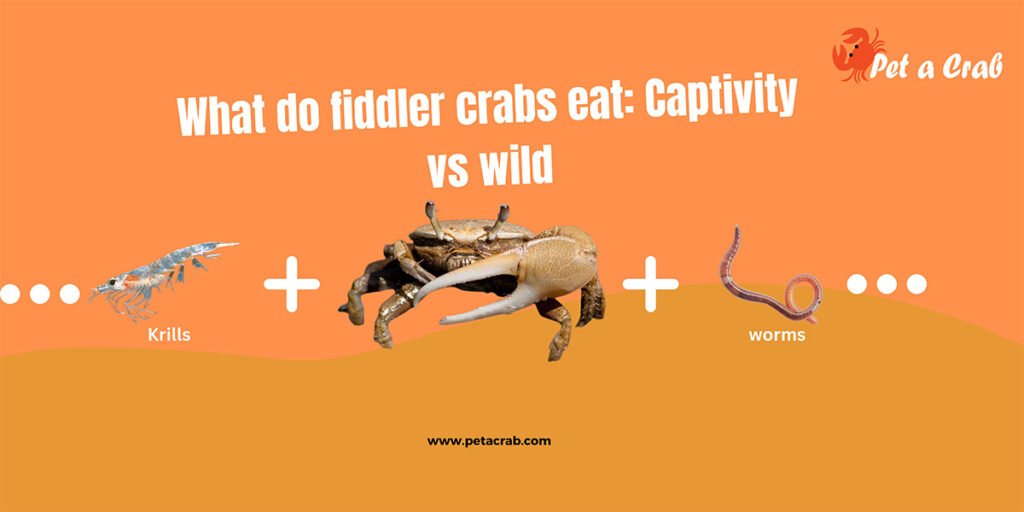The red tip hermit crab is also known as the clibanarious digueti. It is a captivating marine creature that is renowned for its red-tipped claws. However, the small creature is native to the eastern Pacific region and is a favourite among aquarium enthusiasts due to its active nature and beneficial role as an algae eater. The striking appearance combined with its peaceful demeanour can help make it an ideal addition to the reef tanks. Besides, it also plays a crucial role in maintaining a clean and healthy aquarium environment by scavenging uneaten foods.
Among the other hermit crabs, red-tip crabs are highly valued both because of their ascetic value and their apparent ability to control the small sea anemone. In this article, I discuss everything you need to know about this red-tip hermit crab, including their care, behavior, tankmates, and much more.
What is a red tip hermit crab?
There are about 500 known species of hermit crab, and the red-tip hermit crab is one of them. It is a small-sized crab that can barely reach 1 inch long. Their legs are strikingly colored, as the tip is shaped. As with most species, almost all the aquarist sees in the aquarium are the walking legs. Usually, their claws are equal, unlike most of the species of hermit crab. For this reason, members of this genus are called equal-handed hermit crabs.
They can use shells from various gastropods but most are often Cerethium spp. However, it is a voracious scavenger, like its blue-leg hermit crab cousin. The crabs serve as an ideal member of your marine or reef aquarium.

Quick Overview of Red Tip Hermit Crab
- Scientific Name: Clibanarious digueti
- Origin: Mexico
- Minimum Tank Size: 10 gallons
- Care Level: Easy
- Breeding: Very difficult
- Size: Upto 1 inch
- Optimal Temperature: 22–26°C
- Optimal pH: 8.0 – 8.5
- Diet: Omnivore
- Temperament: Peaceful
- Reef Compatible: Yes
- Life Span: Up to 2 years
- Common Name: Mexican Red Tip Hermit crab, Dwarf Red-Tip Hermit Crab, Equal Handed Hermit Crab, Spotted Hermit Crab
Briefly Discuss The Facts About Red Tip Hermit Crab
Natural Habitat
The red-tip hermit crab is known as the Clibanarious digueti. It is one of the most abundant and widespread small hermit crabs throughout the Caribbean Sea. Usually, they are very common in shallow water along the open shores on both the north and south coasts.
Besides, it is native to the coastal waters surrounding Mexico. In addition, they come from temporary large aggregations during the low tides in the intertidal zone.
Behavior
In the wild, the equal-handed hermit crab exhibits high site fidelity and does not make large daily movements. While the species is nocturnal, during the day, the crabs move slowly. Also, the feeding activity starts at dusk and continues throughout the night.
In addition, red-tip hermit crabs are very social and relatively peaceful animals. They can prefer to stick to their group. That way, they can feel more comfortable and safe.
Feeding
According to the research, the red tip hermit crab is an active omnivore in its diet and opportunistic in its feeding habits. In the wild, they spend most of their time searching for food such as organic debris, fresh macroalgae and dead animals.
However, in the aquarium, these hermit crabs play a vital role in a clean-up crew. Besides, they can usually eat fish or shrimp food leftovers, fish waste, dried seawood, many types of macroalgae and dead plants.

Mating
Among the most hermit crabs, the red tip hermit crabs can successfully mate only for a short time following a female molt. The male red-tip crabs can feel when a female crab is ready to molt and grasp her before molting. This molting time may vary from a few minutes to 6 hours.
Breeding
Red tip hermit crabs are relatively difficult to breed in captivity. Because their larvae have differing salinity needs, it is almost impossible to captive breed them. However, they are known to have little reproduction among the other species. Therefore, they do not even know what types of eggs they can develop.
Suitable Tankmates
The spotted hermit crabs can live in peace with the other aquatic animals. Moreover, they live in a hard shell but it is advisable to take caution when you intend to keep them with the more aggressive marine invertebrates.
For example, you can keep them with non-aggressive species such as small fish like tetras, mollies and guppies.
How do you care for the red tip hermit crab?
Due to their small size, red tip hermit crabs are very popular and easy to care for. Besides, they can be a great addition to a reef aquarium. However, it is always important to maintain a species’ natural environment in the tank. Here, I am providing caring facts about these small creatures to maintain a healthy life in the aquarium.

Tank Size
Usually, these crabs are small in size but it is recommended that they require a minimum tank size of 10 gallons for a small group of 2-3 crabs. However, it is also recommended that to avoid crowding the aquarium, one should aim for just one red-tip hermit crab per 3-4 gallons of water.
Water Parameters
In the tank where a red tip hermit crab would be residing, the ideal temperature and pH range should be between 22-26°C and 8.0-8.5. Also, the tank should have a specific gravity of 1.020 -1.025. The hardness of the water should be between 8-16°d. Moreover, they can tolerate most types of water movement but especially prefer slow-moving water.
Substrate
In the tank, you can use either sand or small gravel for the substrate. However, it is important to remember that in the wild, they usually prefer to live on the interradial sandy bottoms. Therefore, sand is the most ideal substrate for them because they are great at adding to and aerating the substrate as well.
Frequently Asked Question
Is red tip hermit crab reef safe?
Usually, the red-tip hermit crabs are completely reef-safe which can make them some of the few good tankmates for the beadle anemone.
Who are the most suitable tankmates for the red-tip hermit crabs?
The most suitable tankmates for these hermit crabs are mollies, guppies, zebra blennies, and tetras.
Are red-spotted hermit crab snails safe?
No, they are not snails safe because they can try to kill them just for their shells. So reef-safe does not mean they are snail-safe.
Related Article – Panther crab


